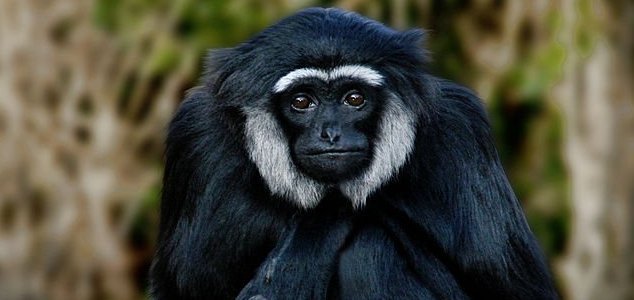Palaeontology
September 10, 2020 · 8 comments
8 comments

The species was a relative of today's gibbons. Image Credit: CC BY-SA 3.0 Julielangford
After stopping for a brief rest, Gilbert noticed something interesting on the ground nearby.
"We knew immediately it was a primate tooth, but it did not look like the tooth of any of the primates previously found in the area," he said.
"From the shape and size of the molar, our initial guess was that it might be from a gibbon ancestor, but that seemed too good to be true, given that the fossil record of lesser apes is virtually nonexistent."
"There are other primate species known during that time, and no gibbon fossils have previously been found anywhere near Ramnagar.
"So we knew we would have to do our homework to figure out exactly what this little fossil was."
It turned out that the molar belonged to a whole new species and genus of prehistoric ape which has since been named Kapi ramnagarensis.
"What we found was quite compelling and undeniably pointed to the close affinities of the 13-million-year-old tooth with gibbons," said researcher Alejandra Ortiz.
"Even if, for now, we only have one tooth, and thus, we need to be cautious, this is a unique discovery. It pushes back the oldest known fossil record of gibbons by at least five million years, providing a much-needed glimpse into the early stages of their evolutionary history."
Source: Phys.org | Comments (8)
New species of prehistoric fossil ape unearthed
By T.K. RandallSeptember 10, 2020 ·
 8 comments
8 comments
The species was a relative of today's gibbons. Image Credit: CC BY-SA 3.0 Julielangford
Palaeontologists have discovered what is thought to be the earliest known ancestor of the modern-day gibbon.
Unearthed in northern India, the fossil - a lower molar - was discovered by Christopher C. Gilbert of Hunter College, and colleagues, while climbing a small hill near to where a fossil jaw had been unearthed only a few months earlier.After stopping for a brief rest, Gilbert noticed something interesting on the ground nearby.
"We knew immediately it was a primate tooth, but it did not look like the tooth of any of the primates previously found in the area," he said.
"From the shape and size of the molar, our initial guess was that it might be from a gibbon ancestor, but that seemed too good to be true, given that the fossil record of lesser apes is virtually nonexistent."
"So we knew we would have to do our homework to figure out exactly what this little fossil was."
It turned out that the molar belonged to a whole new species and genus of prehistoric ape which has since been named Kapi ramnagarensis.
"What we found was quite compelling and undeniably pointed to the close affinities of the 13-million-year-old tooth with gibbons," said researcher Alejandra Ortiz.
"Even if, for now, we only have one tooth, and thus, we need to be cautious, this is a unique discovery. It pushes back the oldest known fossil record of gibbons by at least five million years, providing a much-needed glimpse into the early stages of their evolutionary history."
Source: Phys.org | Comments (8)

The Unexplained Mysteries
Book of Weird News
AVAILABLE NOW
Take a walk on the weird side with this compilation of some of the weirdest stories ever to grace the pages of a newspaper.
Click here to learn more

Support us on Patreon
BONUS CONTENTFor less than the cost of a cup of coffee, you can gain access to a wide range of exclusive perks including our popular 'Lost Ghost Stories' series.
Click here to learn more
Ancient Mysteries and Alternative History
Russia and the War in Ukraine
Israel, Palestine and the Middle-East
United States and the Americas
Total Posts: 7,773,360 Topics: 325,290 Members: 203,821
Not a member yet ? Click here to join - registration is free and only takes a moment!
Not a member yet ? Click here to join - registration is free and only takes a moment!




































Please Login or Register to post a comment.